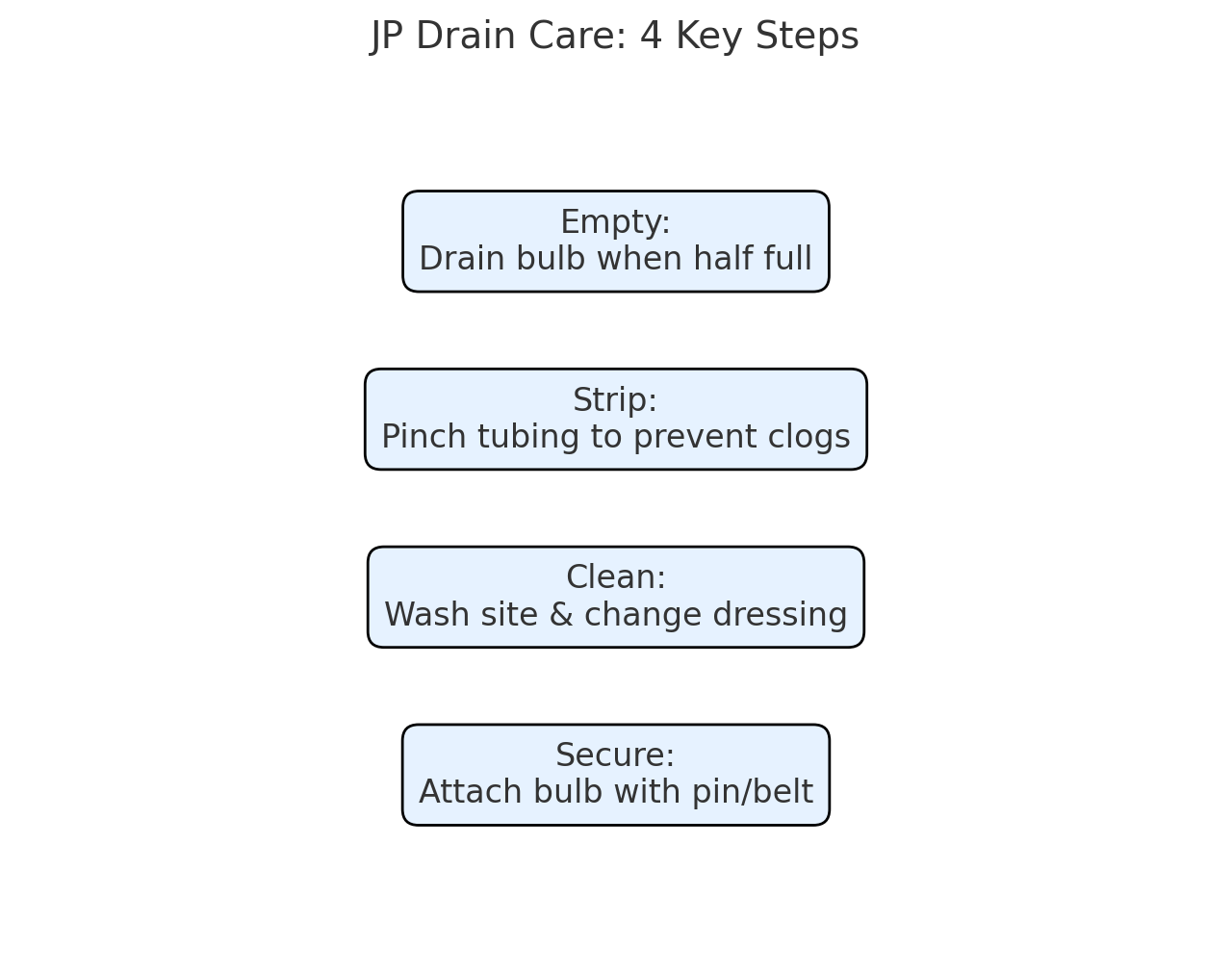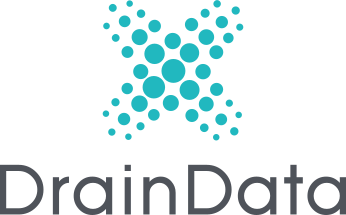If you’ve recently had surgery and have a Jackson-Pratt (JP) drain in place, you may be wondering how to take care of it at home. While it can seem a little intimidating at first, with a little practice and guidance, JP drain care can become part of your routine. This post will walk you through what a JP drain does and how to care for it safely.
🩺 What Is a JP Drain?
A JP drain is a soft, flexible tube connected to a small bulb that gently suctions fluid from the area where you had surgery. This helps reduce swelling and the risk of infection by preventing fluid from collecting under your skin.
Depending on your procedure, you might have one or more drains. They usually remain in place for about 1–3 weeks.

🧼 How to Care for Your JP Drain at Home
1. Empty the Bulb Regularly
- Wash your hands thoroughly.
- Open the plug on the bulb.
- Pour the fluid into a clean measuring cup.
- Record the amount and color of the fluid (our app can help track this!).
- Squeeze the bulb flat and replace the plug to keep suction working.
2. Strip the Drain Tubing
“Stripping” helps prevent clogs:
- Use two fingers (or an alcohol wipe) to gently pinch the tubing.
- Pull down the tubing from near your skin toward the bulb.
- Do this once or twice a day or as recommended by your provider.
3. Keep the Site Clean and Dry
- Clean around the drain daily with mild soap and water or as directed.
- Change gauze dressing if it becomes wet or dirty.
- Watch for signs of infection: redness, warmth, pus, or increasing pain.
4. Secure the Bulb
Don’t let the bulb dangle. Use a safety pin to attach it to your clothing, or use a drain belt or pouch to reduce tension on the tube.
“The first few days felt overwhelming, but once I made it part of my morning and evening routine, it became second nature.”
— Patient testimonial
🚨 When to Call Your Doctor
Call your provider if you notice:
- Sudden decrease or stop in drainage
- Cloudy, foul-smelling, or bright red drainage
- Fever over 100.4°F (38°C)
- Drain accidentally comes out
- Increasing pain, swelling, or redness at the site
💡 Tips for Living with a JP Drain
- Wear loose-fitting clothing for comfort.
- Use a lanyard or belt pouch to shower safely (confirm with your doctor first).
- Keep a log of drainage amounts and times (our app makes this simple and secure!).
- Ask for help if you’re unsure—nurses and providers expect questions.

Caring for your JP drain may feel like a lot at first, but you’re not alone. With the right steps and support, you’ll become confident in no time. Always follow your healthcare provider’s instructions, and don’t hesitate to ask questions.
Stay strong and take care — healing is a journey, and you’re doing great.
